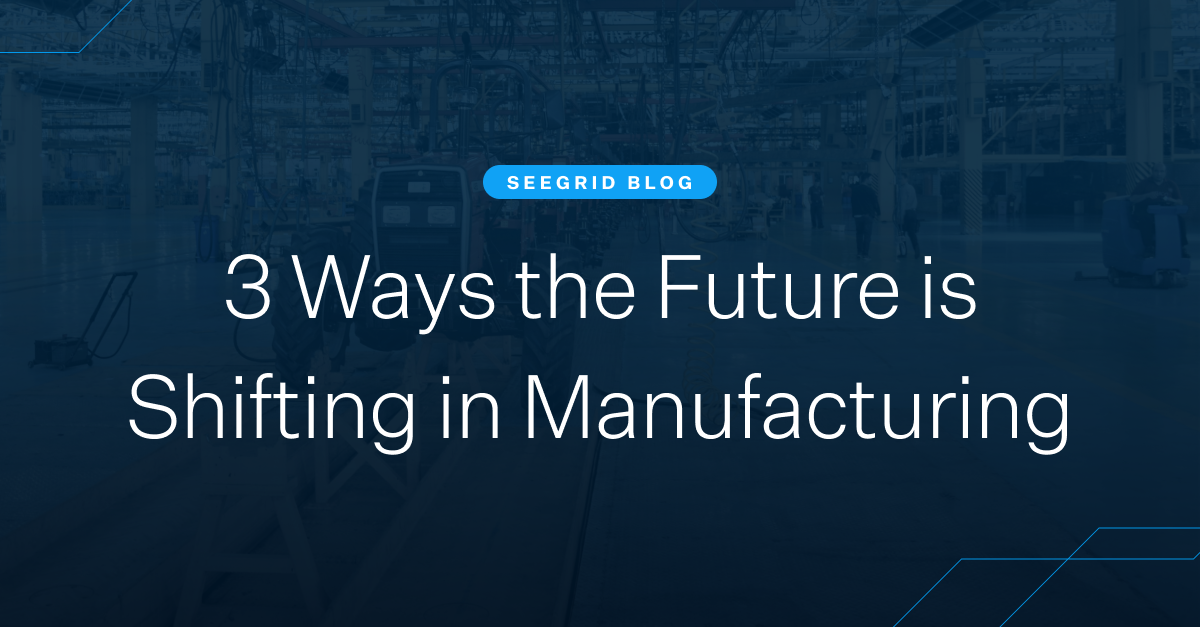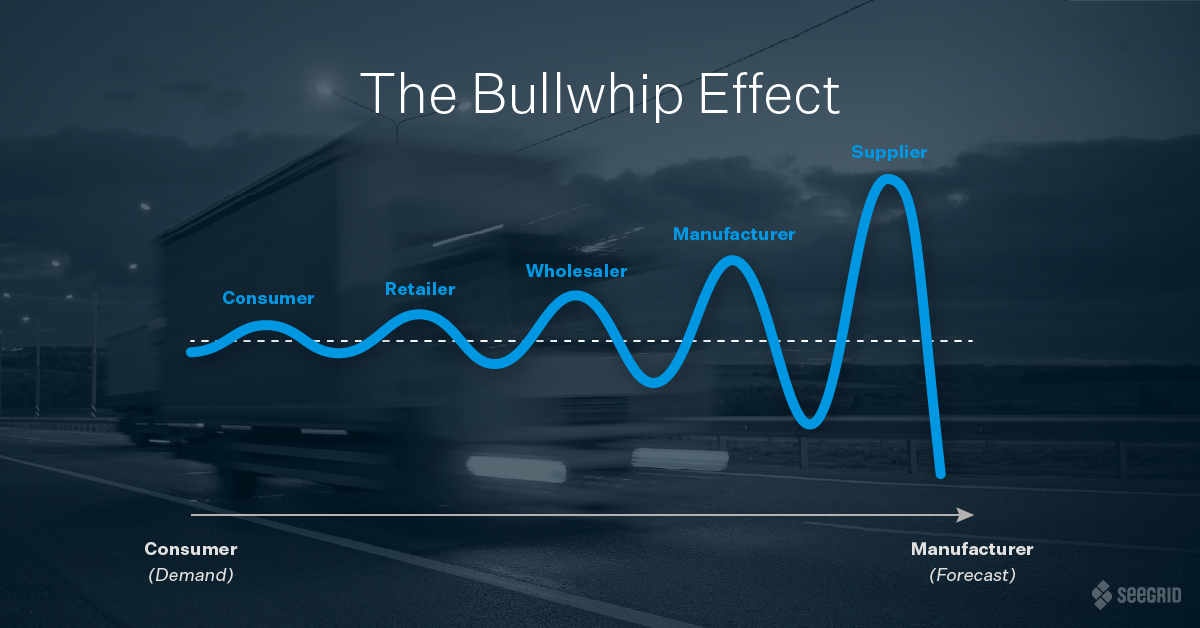Manufacturing facilities constantly focus on objectives that ultimately enable them to produce as many products as possible while improving quality, ensuring safety, and reducing costs. Many operations follow lean manufacturing principles to maximize their throughput volumes, using fewer resources in less time to keep the pace of production.
However, when supply chain disruptions occur, a domino effect of major challenges can erupt, leaving facilities scrambling to keep production running. The COVID-19 pandemic brought several of these ongoing supply chain challenges to the forefront for manufacturers. Many operations faced facility shutdowns, while others struggled to keep up with record-high order volumes.
The pandemic reinforced how crucial it is for manufacturing facilities to have the right tools and technology in place to overcome any hurdles that may arise. Here are three of today’s biggest challenges that are impacting the future of manufacturing, and how you can safeguard your operations against future disruptions.
1. Overcoming Labor Shortages
One of the biggest challenges for manufacturers is finding and retaining labor. With a record high labor shortage, an aging workforce, and social distancing requirements, it’s becoming increasingly more difficult for manufacturing facilities to keep up.
Simply put—there aren’t enough people to fill current manufacturing positions. In fact, according to a study published by Deloitte and The Manufacturing Institute, as many as 2.1 million manufacturing jobs will go unfilled through 2030, which could cost the U.S. economy up to $1 trillion. With high turnover rates and a widening labor gap, it’s extremely challenging and costly to find, hire, train, and retain a labor force. The current labor market is complicating many facility managers’ productivity plans and budgets.
Automation solutions, like autonomous mobile robots (AMRs), reduce the strain on human labor. AMRs ensure your operation can run reliably and seamlessly 24/7. Mobile robots are designed to complete their tasks while always traveling along approved routes. They provide a level of reliability and consistency that simply can’t be matched by a human workforce.
Facilities should aim to automate dangerous, repetitive tasks within workflows. This allows workers to take on safer, more rewarding career opportunities within the facility, which will strengthen employee retention. Make the most of complementary strengths—AMRs can take on the monotonous hard labor, seamlessly working alongside humans who are focused on more cognitive tasks. Automation solutions allow facilities to create safer, more rewarding environments for human workers while boosting productivity levels and eliminating costs associated with recruiting, training, and retaining a workforce.
2. Staying Ahead of Accelerated Demand
Many manufacturers are facing a perpetual peak in demand with order volumes surging at record-high levels on an everyday basis. In the past, seasonal spikes were predictable and planned for months in advance. But now, it’s an entirely different story with demand levels continuously experiencing extreme shifts.
In addition to the sheer quantity of products being produced, consumer demands have also become more complex with expectations for near-immediate deliveries and customized products. Demand is outpacing the labor supply, forcing facilities to work overtime to get consumers their orders on time.
The key to fulfilling demand on time is predictability. AMRs operate seamlessly alongside human workers, doing exactly what they are trained to do⏤delivering on time, every time. Mobile robots can quickly be implemented to get to work, helping ease the strain of heightened demand. AMRs will help you drive results and achieve hands-free flexibility to increase productivity while reducing costs.
Additionally, some automation solutions also offer fleet analytics software to provide visibility into your AMR fleet performance. For example, Fleet Geek, part of Seegrid’s Fleet Central software suite, provides on-demand insights into your material flow. Instantly track output levels at the end of every day, shift, or hour to have a full understanding of how your fleet is performing.
Having visibility into your fleet through enterprise software allows you to access data to identify areas of potential improvement and better forecast what the business will do in the future. Data analytics provide facilities the information needed to make informed decisions for an agile AMR fleet that can keep pace with heightened demand.
3. Scaling for Success in New Facilities
Due to the major influx in demand, many companies are expanding by opening new manufacturing facilities. Though these expansions foster company growth and opportunity, new facilities are facing hurdles in finding an available workforce within the new surrounding area, which can cause major delays. Hiring new workers and getting them up to speed with processes, training, and expectations requires a major investment in time and resources.
Companies need to plan for a flexible future to ensure they can quickly and efficiently adapt and scale their operations. Flexible automation solutions keep operations flowing by decreasing downtime when changes occur.
Seegrid Palion AMRs can be immediately dispatched or redeployed while production is running for unparalleled flexibility and the lowest total cost of ownership. On-site facility employees can quickly train and retrain AMR routes without the help of a Seegrid representative. When processes change, simply reassign your AMRs to start on different tasks.
Future-Proof with Agile Automation
The pandemic brought on a number of challenges for the manufacturing environment—but many of these challenges are not new. Hurdles such as labor shortages, shifting demand, and ease of scalability have always existed in supply chains, and these challenges aren’t going away.
Over time, all manufacturing facilities will need to adapt to accommodate changes. Whether you are launching new products, opening new facilities, experiencing an extreme demand shift, combating labor shortages, or any other disruption, change will always be a factor. Having the flexibility to adapt to these changes will make or break your competitive advantage and long-term success.
Manufacturers are choosing to automate right now because they see it as a way to build resilience into their supply chain. Automation is a way to effectively supplement a strained labor force, and it provides new insights into their business that they never had before.
To future-proof your operation, aim to build resiliency with a reliable solution that can be used on a multitude of different processes and that can scale or adapt as needed. Automation provides a way for companies to increase safety, throughput, flexibility, and the ability to adapt to market changes in the future.
Infographic: Driving Down Costs with Automation
Download this infographic to learn how autonomous mobile robots complement your human workforce to drive a strong and fast ROI.







